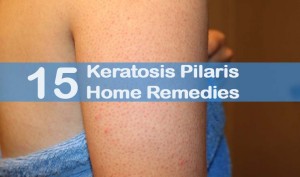 People suffering from keratosis pilaris often get bullied and embarrassed due to their skin appearance. It is a result of excess keratin buildup plugging in the hair follicles. This leads to tiny, red and inflamed bumps on the skin. It worsens during winters, puberty, and pregnancy.
People suffering from keratosis pilaris often get bullied and embarrassed due to their skin appearance. It is a result of excess keratin buildup plugging in the hair follicles. This leads to tiny, red and inflamed bumps on the skin. It worsens during winters, puberty, and pregnancy.
Though there is no complete cure for keratosis pilaris, it can be reduced to the maximum extent with simple home remedies. Some simple home remedies include baking soda, apple cider vinegar, yogurt, natural scrubs and many others…
Home Remedies for Keratosis Pilaris:
There are different home remedies you can try to reduce the appearance of keratosis pilaris. We have mentioned them below. You can try two or more methods from the list…
1. Baking Soda
The gritty nature of baking soda exfoliates the dead skin cells and other impurities blocking the pores. This process will reduce the bumps on the skin.
- Combine 2 – 3 tablespoons of baking soda and water.
- Apply to the affected area and gently scrub for 3 – 5 minutes.
- Rinse with water.
- Repeat the process regularly for best results.
- For extra benefits, you can add 2 tablespoons of table salt into the mixture.
2. Vitamin A Capsules
Retinol present in vitamin A capsules encourages cell turnover and prevents the hair follicle plugging.
- Squeeze the oil from 1 or 2 vitamin A capsules.
- Apply to the affected area and gently massage for 3 – 4 minutes.
- Leave it on for 15 – 20 minutes.
- Repeat the process regularly for best results
- Note: Eat fruits containing vitamin A like carrots, papaya, grapes, strawberries, and tomatoes for added results.
3. Alpha Hydroxy Acids
Alpha hydroxy acids are mild and natural acids. Lactic acid, found in milk and yogurt, gently exfoliates the skin to remove KP. Glycolic acid, made of fruit acids, is also a popular skin care product.
- Apply a lotion or cream containing alpha hydroxy acids to the affected area and gently massage for 3 – 5 minutes.
- Repeat regularly for best results.
- Note: Alternately use a lotion or cream containing either beta hydroxy acids or glycolic acid.
4. Coconut Oil
Our skin can easily absorb the unique fatty acids present in coconut oil which helps to moisturize deeply. Its anti-inflammatory and anti-bacterial properties reduce the inflammation and redness. Rub coconut oil on the affected area before taking bathing. Or else try any method mentioned below.
Process 1: With Sugar
- Combine 2 parts of extra virgin coconut oil and 1 part of each white granulated sugar, and brown sugar.
- Apply the mixture to the affected area and gently scrub for 2 – 4 minutes
- Rinse with water.
- Repeat regularly for best results.
- Note: Add a teaspoon of vanilla extract or honey for added moisture.
Process 2: with ACV
- Mix equal quantities of apple cider vinegar and coconut oil with a teaspoon of honey.
- Apply the mixture to the affected area and leave until dry.
- Repeat daily for best results.
5. Yogurt
The lactic acid present in yogurt provides relief from the excess deposition of keratin in the hair follicle. It also provides relief from the dryness and irritation.
- Apply 3 – 4 tablespoons of yogurt on the affected area.
- Leave it on for 15 minutes before bathing.
- Repeat regularly for best results.
6. Apple Cider Vinegar
Apple cider vinegar has anti-inflammatory properties which reduce the swelling, cleanses the skin, prevent infections and heal KP quickly.
Process 1:
- Using a cotton ball, apply organic apple cider vinegar to the affected area.
- Leave it to dry completely.
- Repeat daily for best results.
Process 2:
- Melt 4oz of coconut oil in the microwave.
- Combine melted coconut oil, 1 tablespoon of soy lecithin and 4oz of organic apple cider vinegar.
- Whip the ingredients well and store in an airtight container.
- When it cools down, apply the mixture on the affected areas.
- Leave it on to dry completely.
- Repeat the application daily.
Note: Due to apple cider vinegar, the application may be smelly but it vanishes as soon as it dries completely.
7. Oatmeal Bath
Oatmeal helps in moisturizing the skin. It reduces the appearance of keratosis pilaris by softening the tiny bumps.
- Add a handful of powdered oats to lukewarm bath water.
- Bathe in the water for 15 minutes.
- Repeat 3 times in a week for best results.
8. Sugar and Sour Cream
The mixture of sugar and sour cream contains lactic acid which eliminates the buildup of keratin in the hair follicles.
- Combine 1 teaspoon of granular sugar and 2 tablespoons of sour cream.
- Apply to the affected area and gently massage for 3 – 4 minutes.
- Rinse off with water and pat dry.
- Repeat regularly for best results.
9. Olive Oil
Olive oil moisturizes the skin without clogging the pores. The vitamin E content present in it is helpful in reducing keratosis pilaris. You can just apply olive oil and leave it to dry completely. Repeating this process 2 times daily will provide the results. Or else you can follow the below process.
Process 1: With Sugar
- Mix olive oil and sugar.
- Apply to the affected area.
- Wet your hands with warm water and gently scrub the application for 2 – 3 minutes.
- Repeat regularly for best results.
Process 2: With Salt
- Combine 1 tablespoons of olive oil and 3 tablespoons of salt.
- Apply the mixture to the affected area and massage for few minutes.
- Rinse it off with water and pat dry.
- Repeat the process 2 – 3 times in a week.
10. Milk
Milk contains lactic acid which softens and reduces the bumps formed due to keratosis pilaris.
- Add few cups of whole milk to lukewarm bathwater.
- Bathe in the water for 15 minutes.
- Repeat regularly for best results.
- Alternatively, you can apply milk to the affected area for 15 – 20 minutes before bathing.
11. Sea Salt
The gritty nature of sea salt unclogs the pores and softens the rough bumps. The minerals in sea salt encourage the production of new cells and remove the toxins from the skin.
- Combine 1 cup of sea salt, 1 1/2 cup of grapeseed oil and 1 tablespoon of grapefruit essential oil.
- Wash the affected area with warm water.
- Apply the mixture while the skin is still wet.
- Gently scrub for few minutes.
- Rinse off with warm water and pat dry.
- Repeat the process regularly.
12. Vitamin E Oil
Vitamin E oil softens the bumps and retains the moisture. It also encourages skin repair and nourishes the skin.
- Remove the contents of 1 vitamin E capsule and massage the oil on the affected area.
- Alternatively, you can add few tablespoons of vitamin E oil to your bath water and soak in it for 30 minutes.
- Repeat any one of the processes regularly to notice the results.
13. Epsom Salt
The minerals present in Epsom salt soften the tiny bumps. It also helps in reducing the itching, removing the toxins and decrease the inflammation.
Process 1:
- Add 1 cup of Epsom salt into warm bathwater.
- Soak in it for 20 minutes.
- Pat the skin dry and apply any moisturizer preferably coconut oil or olive oil.
- Repeat the process daily.
Process 2:
- Combine a handful of Epsom salt and 1 tablespoon of olive oil.
- Gently scrub the mixture on the skin for few minutes.
- Rinse off with water and pat dry.
- Repeat the process once or twice in a week.
Note: If you have high blood pressure, diabetes or heart problems, then avoid Epsom salt baths.
14. Aspirin
Aspirin soothes the irritation and redness caused by keratosis pilaris.
- Grind few aspirin tablets to make a powder.
- Mix aspirin powder with enough amounts of water to make a paste.
- Apply the paste to the affected area and gently massage for 2 – 3 minutes.
- Leave it on for 5 – 7 minutes and rinse with cool water.
- Repeat regularly for best results.
15. Tea Tree Oil
Tea tree oil is very helpful in treating the tiny bumps, irritation, and redness caused by keratosis pilaris.
- Dilute few drops of tea tree oil in 2 tablespoons of any carrier oil.
- Massage the mixture on the affected area.
- Leave it to dry completely.
- Repeat the process regularly until you achieve the results.
16. Witch Hazel
Witch hazel cures the tiny bumps, soothes the irritation and redness caused due to keratosis pilaris.
- Blend few witch hazel leaves with some water to make a thick paste.
- Apply on the affected area.
- Rinse it off with water after 15 – 20 minutes.
- Repeat the process regularly.
For added benefit: You can add any moisturizer into the mixture which helps to speed up the healing process.
17. Sea Buckthorn
- Blend few leaves of sea buckthorn with some water to make a paste.
- Apply the paste on the affected areas.
- Leave it on for 5 – 10 minutes.
- Rinse it off with warm water and pat dry.
- Repeat the process regularly.
- Alternatively, you can apply sea buckthorn oil on the affected area and leave it to dry completely.
Dietary Tips:
Include the following foods in your daily diet to control the keratosis pilaris from inside.
- At least 5 servings of fresh fruits and vegetables in your daily diet.
- Foods rich in vitamin A and E like carrots, mangoes, pumpkins, papayas, tomatoes, green leafy vegetables, and strawberries.
- Foods rich in Omega – 3 and 6 fatty acids like salmon, walnuts, and flaxseeds.
- Herbs like calendula, chickweed, burdock, marshmallow, and slippery elm.
- Cold water fish like salmon, tuna, and mackerel contain omega – 3 fatty acids. Eat cold water fish three times weekly to prevent and treat KP. Alternately take fish oil supplements on a regular basis.
Tips and Precautions:
- Use a loofah, washcloth, or an exfoliating cream to gently wash your face with mild soaps twice daily, particularly if you have sensitive skin.
- Moisturizing softens skin and KP bumps. Use lemon oil, green tea oil, camellia oil, or cocoa butter to deeply penetrate the skin and treat KP. If you want to use commercial lotions then choose moisturizers that contain urea, salicylic acid, and propylene glycol to soften skin after washing.
- Exfoliation smoothens and eliminates bumps, eliminating acne and improving overall appearance. Make a paste of baking soda, water, salt, lactic acid (milk, yogurt, buttermilk), mild acids (lemon juice, apple cider vinegar) and apply it to the affected area. Gently scrub 3 – 5 times weekly. Vigorous scrubbing will irritate the skin and make KP worse so beware.
- Avoid contact with allergens and pollutants such as chlorine-treated water, pet dander, mold, dust mites, fluoride, harsh detergents, chemicals, smoke, perfume, laundry detergents.
- Expose yourself to sunlight for at least 15 – 20 minutes daily. Vitamin D deficiency can cause dryness and lead to KP. Remember to use sunscreen lotion while exposing to sun.
- Stay hydrated by drinking at least 8 – 10 glasses of water to flush unwanted toxins from the body.
- Avoid Trans fats commonly found in hydrogenated oils and margarine. Eat more nutritious food that can easily absorbed by the body that strengthen the immune system.
- Use a humidifier when sleeping to keep air moist and reduce dry skin.
- Pat dry your skin using a soft towel instead of rubbing harshly as this will further irritate KP.
- Taking extremely hot showers can dry out the skin and worsen the keratosis pilaris.
- If you live a dry area, then use a humidifier in your house to keep the air moist. This helps to maintain the skin smooth.
- Use soaps that are mild and contain oatmeal or goats milk. Avoid using soaps that contain harsh chemicals.
- Don’t attempt to remove, scratch or squeeze plugs from the skin as it can worsen the condition.
- Avoid eating junk food, smoking and drinking alcohol.
Have you tried any of these methods? Do you know any other methods to treat keratosis pilaris? Share your experience, comments and suggestions in the comments section below.
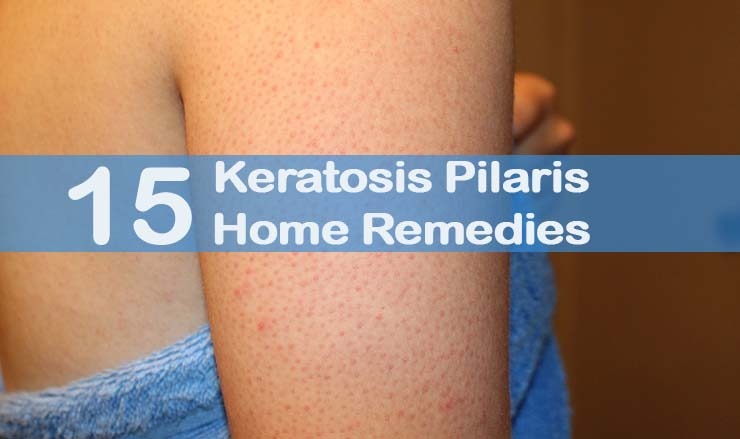
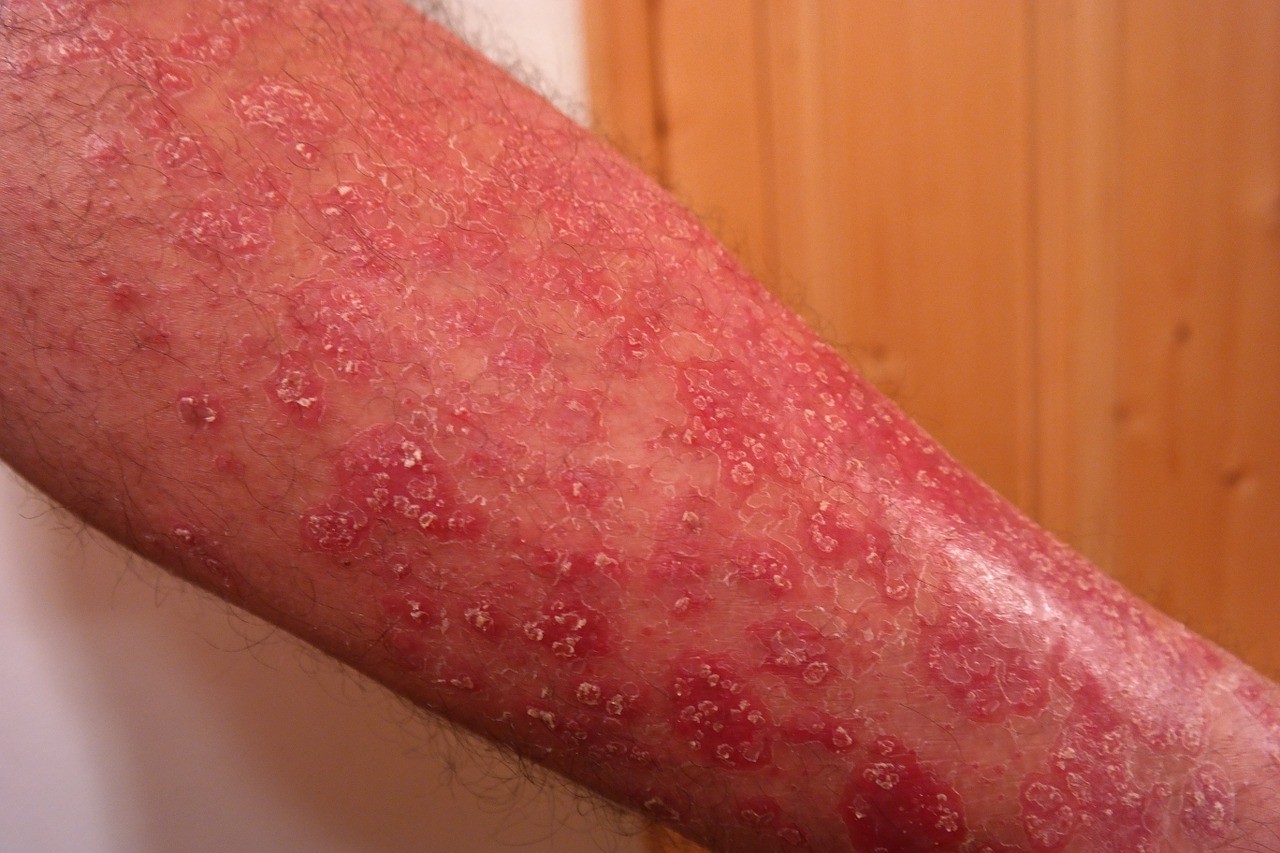
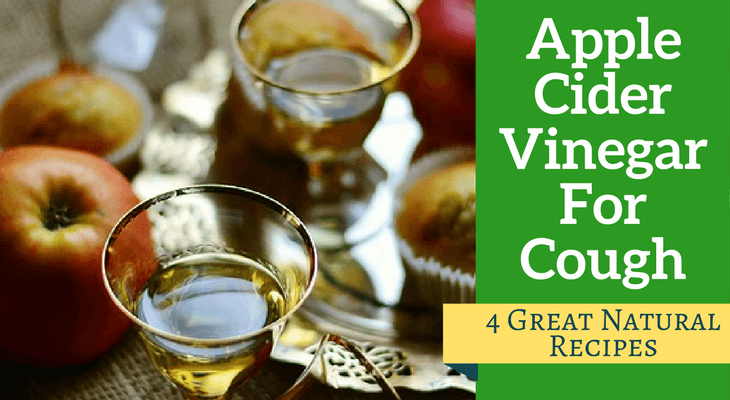





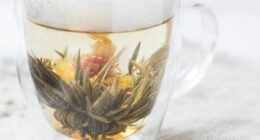

27 comments
Thank you! God bless!
I started taking fermented cod liver oil capsules that are mixed with raw butter and mine went away in 3 days! They’re high in vitamin a and d! They worked awesome!
Where do you find those? And do you mix butter in with it or does the capsule come with all that?
Gluten free diet is the cure for this!!!
Yes, gluten free diet improves immune system and hormonal balance. Imbalance in hormones causes excess production of keratin which results in keratosis pilaris. So it is important to follow gluten free diet to reduce keratosis pilaris.
I disagree. Mree, I hope this worked for you, and if so, I’m glad! But for me, a gluten-free diet had zero impact on KP. My KP started during acne treatment with Accutane, almost 15 years ago. I went gluten-free 10 years ago, and the KP has not changed. I’m going to try drinking apple cider vinegar (ACV).
One person on another site recommended:
1 TBS of Bragg’s ACV
1 TBS of raw, unfiltered honey
16 oz of warm water
Once a day
The bottle of ACV says to drink:
1-2 TBS of ACV
8 oz. of water
Three times a day
Optionally, sweeten with 1-2 TBS of honey, maple syrup, or molasses, or 4 drops of stevia herb extract.
I’ll probably split the difference somewhere in the middle of the dosage recommendations, and see what happens. The warm water – as opposed to cold or room temp. – probably helps the honey more than the ACV. I have some honey, so a little sweetness can’t hurt!
Now did u get rid of kp?
Our experience was the same. Gluten free hasn’t helped. Thanks for your tips
Not true. My daughter has been gluten free for years and hers is still bad. So glad for you that it relieved yours.
My boyfriend has this condition and has recently been using tea tree oil which is really smelly but works super well! He saw improvement in like three days.
Dani,
Does your bf dilute the tea tree oil and rub it on the areas with KP and leave it, or wash it offf after a period of time? TYIA
How many times in a day he was using?
I started drinking apple cider vinegar every morning ina glass of water and it soon disappeared.
Thanks for sharing your experience.
How much apple cider vinegar do you put in how much water?
Lamcatin lotion at Walgreens – it will disappear within days but returns if you stop using it. It’s been recommended by my dermatologist. Just rub it in really good.
Does it help with redness mine seems to always be irritated or inflammed
My daughter is 10 years old and has it all over her arms and a patch near her elbow. I feel horrible for her, I just read up on this condition and will do everything I can to help her so thank you
This is a great list, thank you for putting it together. One thing I would add is adding Epsom Salts to a bath, about 2 cups. It is great for skin, hair, and relaxing muscle cramps.
Pls let me know which is better for checken skin
All the above remedies are effective in reducing the chicken skin or keratosis pilaris. So, choose any one as per your convenience and try it regularly.
Does it help with redness mine seems to always be irritated or inflammed
Yes, they helps to reduce the redness and inflammation as well.
Does the soda mixed with salt work?
Everyone even doctors say that kp is permanent..but how u guys got such results??from 1 year i am taking treatment for this but still i have it..please i am really upset anyone help!!will it go?
Now I am applying bakingsoda+curd(yogurt)+salt..is it ok?
Now I am applying bakingsoda+curd(yogurt)+salt..is it ok?Please reply